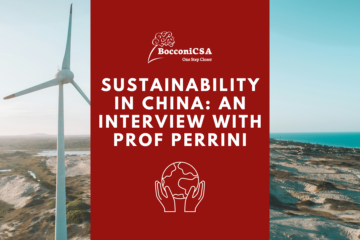[Author: Ruggero Giorgetti]
In recent years, China has emerged as a global focal point in the pursuit of sustainable energy practices, with significant investments in renewable resources and an ambitious commitment to leading the world in renewables. However, this commendable effort is juxtaposed against the stark reality that China remains the largest global consumer of coal.
The latest insights, derived from the comprehensive report by the China Electricity Council (CEC), herald a noteworthy shift. Projections for 2024 indicate that, for the first time, wind and solar energy production in China is set to surpass that of coal. This development underscores the nation’s commitment to alternative energy sources and aligns with its objectives for a circular economy in the years ahead.
Integral to these achievements is the optimization of energy supply capacity. Initial estimates suggest a 12% surge in national electricity generation by the end of 2024, reaching a staggering 3.25 billion kW. Non-fossil fuel sources, predominantly solar and wind, are anticipated to constitute approximately 40% of the total installed capacity, illustrating substantial progress.
Yet, amidst these successes, China stands accused on the global stage as the largest emitter of CO2, contributing 30% of the world’s total emissions. This duality prompts critical questions about China’s true leadership in sustainable practices.
While the nation takes significant strides in renewable energy, it grapples with the challenge of reducing emissions in tandem with rapid economic growth. President Xi Jinping’s ambitious targets, including reaching CO2 emission peaks by 2030 and carbon neutrality by 2060, are commendable but face scrutiny given the continued rise in emissions.
China’s emergence as a powerhouse in renewable energy and green technologies raises eyebrows in Europe. Concerns about competition and reliance on Chinese technologies dominate the discourse, prompting the contemplation of protective measures against a potential monopoly in the renewable market.
China, at this pivotal juncture, confronts challenges that include managing the impact of heat waves, developing innovative solutions for energy transport between provinces, and navigating powerful lobbies advocating for coal. The effectiveness of policies against coal construction will be a litmus test for China’s commitment to sustainable practices.
In conclusion, China finds itself at a decisive crossroads, a critical juncture determining its role in global environmental stewardship. Will the nation uphold its environmental commitments and navigate the challenges, ensuring a seamless transition to sustainable energy, or will the shadows of pollution cast doubt on its aspirations to lead the world in green initiatives? The unfolding narrative will elucidate China’s trajectory in this pivotal challenge for the future of our planet.



0 Comments